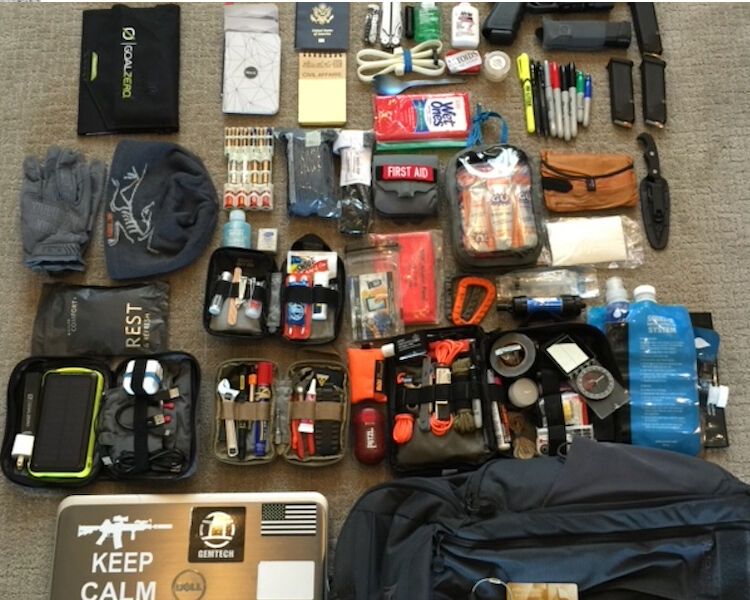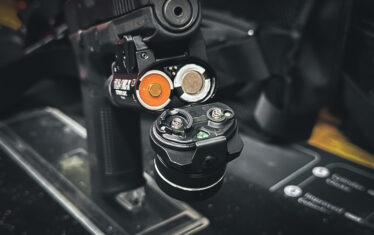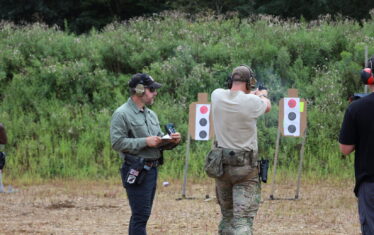There is a lot of talk about Bug Out Bags or Get Home Bags. The idea gets a lot of play, but how much do you know about a Bug Out Bag or what you should have in it? Better yet, how can you integrate it into your life? I’ll break down what it is, what should be in it, and how to use it to your advantage.
WHAT IS A BUG OUT BAG?
The term “Bug Out Bag” refers to a pack that has essential items in it, to aid in leaving a location in a time of turmoil and getting to safety. This is my own definition, but the general idea is the same.
When you think of a Bug Out Bag, images of backpacks loaded with gear can spring to mind for some people while others think of larger bags with far more items stocked inside. When it boils down to it, it’s about personal preference how big or what items are considered a necessity to your situation.
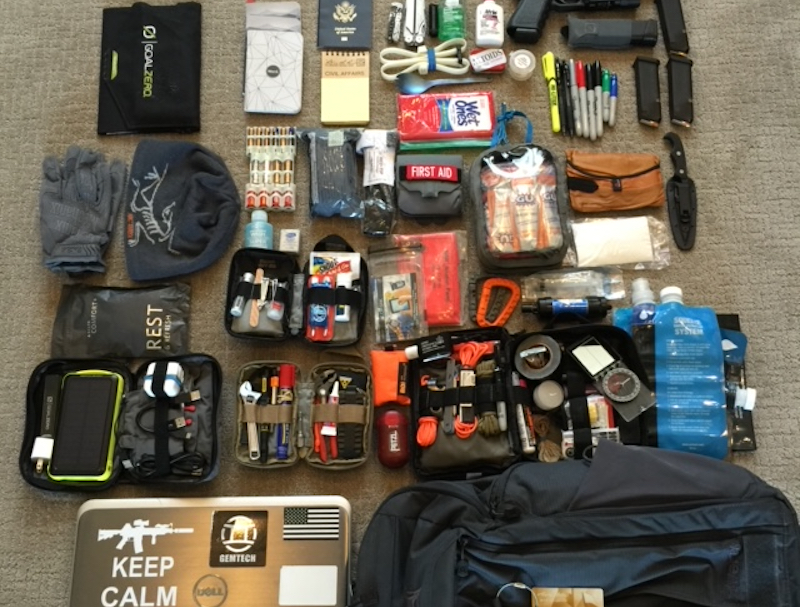
Terms like Bug Out Bag, Get Home Bag, and others, can be used interchangeably online and face-to-face conversation. I tend to think of preparedness bags as a hierarchy, starting with the least number of items being basic everyday carry. These are the things that are always on your person when you leave the house. Things like a wallet, knife, keys, flashlight, concealed carry weapon, and phone are all things I have for my EDC.
The next step up from the EDC is a Go Bag, which is comprised of the EDC along with the bare minimum to allow you to get out of a situation in a relatively easy manner. Extra ammunition of my concealed carry, or additional clothing stashed in my vehicle would be a part of my Go Bag.
After the Go Bag, things can get a little muddled. Some folks consider Get Home and Bug Out to be the same thing, or interchangeable. Others think of a Get Home Bag as the bare minimum to get home from a contested or hostile area. So that would include everything from your Go Bag and anything else to help you get back to your home location with ease.
The final one is the Bug Out Bag. Gently put, this would be when the stuff hits the fan and you’re heading out with no return in sight. Think natural disaster. For the intention of this article, I’ll be using the term Bug Out Bag to cover all of these, because again, it comes down to your own preferences and ideals as to how you approach the bag set-up and purposes.
WHAT TO INCLUDE In Your Bug Out Bag
With a Bug Out Bag, the contents are critical to your own survival, so attention should be paid to what you personally need most. Things like medical, power or electronic devices, any food or water, emergency gear, and defensive items all need to be addressed and possibly included for a proper Bug Out Bag.

MEDICAL
Items from the medical category should be pretty easy to find and pack in your Bug Out Bag. Things to include would be a variety pack of pain relievers including ibuprofen, acetaminophen, and aspirin. You don’t need a whole bunch of any of these, but a few of each can make a big difference. On top of that, including items like antacids or allergy medications can help when things get stressful.
Additionally, typically thought of medical items shouldn’t be forgotten. Things like a tourniquet or other pressure device and other bleeding control measures definitely should find a place in a Bug Out Bag. A small assortment of bandages, gauze, or medical tape can come in handy.
POWERing YOur ELECTRONICS
Powering your gear when you’re using your Bug Out Bag is important, and often overlooked in the planning stage. Even having other electronics in your Bug Out Bag is beneficial, like an up-to-date GPS unit and a small handheld radio ensures proper courses and communication if necessary. You can keep the charge up on those items with things like portable power bank and charging cords, or even batteries depending on the device.
Oh, and don’t forget about a flashlight and its power source. Bad things don’t just happen during the day.

FOOD, WATER, and SHELTER
I’m not saying you need to include loads of food or water in your Bug Out Bag, but you need to plan for acquiring said items or having a few items in the pack. Prepackaged smaller snacks (think jerky, trail mix, or granola bars) are small and easy to stash. Some people go as far as to include one or two emergency meals like backpacking meals or even just a pack of ramen.
With that, water treatment and storage should be included. I personally carry a Sawyer straw and a collapsible bladder for easy filling on the go.
In addition to food and water, emergency clothing layers or shelter should be considered. An extra layer in the pack or even just gloves and a hat in colder areas can make things more comfortable. The bag can be adjusted to correspond with the current season and weather conditions, so it can be easy to update or reorganize your bag on a semi-regular basis.
Defensive Items
The final major category to consider for a Bug Out Bag should be defensive items. These can be as intense or relaxed as you want it, but you should heavily consider having something for that purpose.
Some folks prefer less-lethal options like pepper spray or knives. Personally, I think you should have a firearm of some sort, with additional ammunition, to make it viable for various situations. The choice of whether you go with a pistol or maybe even a compact or collapsible rifle is a personal one, so you need to do what’s right for you and your plan.
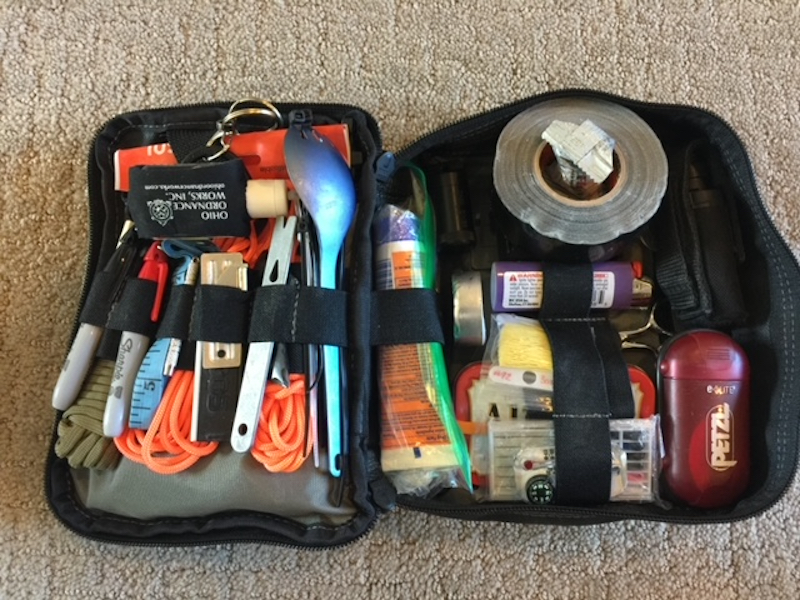
OVERALL WEIGHT & SIZE
Size considerations should be brought into play. While having all the aforementioned items would be great, not everyone will be able to safely and comfortably transport that amount of gear on their backs. Mobility with your Bug Out Bag is paramount because having the world’s supply of survival gear on your back won’t mean a whole lot if you can’t get yourself to safety with those items.
Think hard and be honest about your own limitations and adjust your pack to that. A 230-pound man who does CrossFit will be able to pack a whole lot more than a sedentary individual who is less fit. Be realistic with yourself and your potential limitations; you’ll only harm yourself if you aren’t.
HOW TO ARRANGE YOUR BUG OUT BAG
The layout of your Bug Out Bag will depend on the type of bag you use. For instance, a lot of people I know who routinely carry a Bug Out Bag with them opt for a backpack with different pockets to help them organize their gear. Using a backpack helps to keep you from overpacking too much (theoretically) and comes with carry straps already in place so it would be easy to use. Additionally, there are some very low-profile or nondescript bags out there that would work great as Bug Out bags.
Ideally, you’ll want the most used or most important items to be easily accessible. But this can also vary depending on the situation, so don’t get too hung up on making it perfect. A phrase I live by in these situations is, “Good enough is better than perfect.”
Generally speaking, medical gear and supplies should always be easy to access, as well as smaller protection gear like pepper spray or an extra layer of clothing. For me, things like the water filtration stuff can go further into the bag while snacks should be midway in the bag.
Gather your items and try out a few different load-outs. You’ll find one that works great for you.
HOW TO INCORPORATE IT INTO YOUR LIFE
Having a Bug Out Bag is good and all, but it does you no good if you don’t include it in your daily life. But how do you go about doing that? With practice and making a concerted effort.
If the idea of bringing a bag with you whenever you leave the house is daunting to you (like it is to me), start small. Put together the bare minimum and start carrying that until you’re comfortable with it — and this is the stage that I’m currently in. Once good with it, add a few more things and repeat. Keep the process going until your Bug Out bag is where you want it to be in regard to contents.
There’s no time like the present to start, so plan out your Bug Out Bag, flesh out your contents, and get to carrying it.





